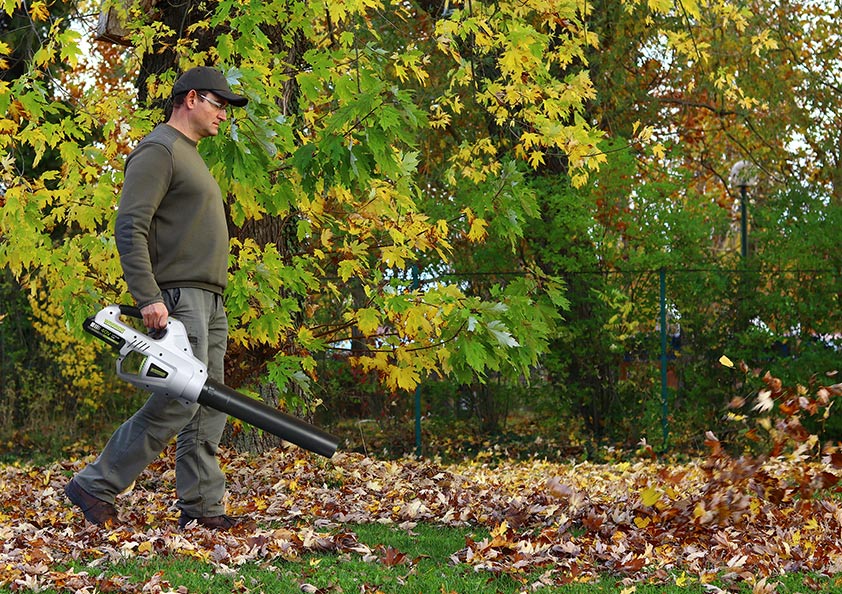Garden debris can ruin grass and turn it yellow by blocking available light, air, and nutrients. Spending a little time clearing your garden throughout the colder months will keep your lawn healthy (and the neighbours happy) until spring arrives. There’s nothing that handles this quite as simply as a leaf blower.
First up, let’s look at the different kinds of leaf blowers and determine which might be best for you and your garden.
Types of Leaf Blower

Thankfully, there are many different leaf blowers on the market, but of course, as it’s our speciality, we’re going to focus on the best cordless leaf blowers.
Handheld leaf blowers
The majority of handheld leaf blowers are battery-powered and cordless, allowing them to be light, portable, and inexpensive. If you have a small garden and patio area, handheld will be sufficient for your needs. It can easily take care of leaves, light debris, and even a little snow. It’s smaller size also makes it easy to store. A handheld leaf blower can often even be used to clean gutters and other hard-to-reach places without causing too much noise for the neighbours.
Backpack leaf blowers
A backpack leaf blower takes things up a notch and can cope with a mid-size garden. These usually have more power, which of course makes the equipment heavier but the backpack allows you to distribute the weight across your back to avoid injury. This more powerful blower can cope with leaves, twigs and larger debris throughout your garden.
Walk-behind leaf blowers
Usually preferred for larger-grounds and professional crews, the walk-behind leaf blower can be used for leaves, rubbish, and cardboard, as well as heavier snowfall.
Often powered by petrol and oil, the extra power makes them louder, heavier, and more difficult to manoeuvre, but make larger tidy-up projects much easier. Extra maintenance may also need to be considered throughout the year with a petrol-powered engine.
CFM vs MPH
The power and performance of your cordless leaf blower is dependent on both CFM and MPH. CFM tells you the power of the volume of air that is expelled, while MPH tells you the speed of the air being expelled. Let’s break this down a little more…
CFM
CFM stands for cubic feet per minute and is the most important factor to look at when purchasing your leaf blower. It indicates whether your device has a low or high air volume and, therefore, how effective it will be. For example:
Small garden / patio: Between 200-400 CFM.
An acre garden or larger: Between 400-700 CFM.
Larger grounds: Approximately 3000 CFM.
MPH
Miles per hour is less important and shows you the speed of the air as it comes out the barrel. High speed does not necessarily mean more power, so you should consider the combination of CFM and MPH when choosing the best battery leaf blower for you.
Additional leaf blower considerations

So far, we’ve talked primarily about leaf-blowers and how easy they are. Even so, it’s worth noting that there’ll still be some manual labour required once you’ve blown the debris into a pile.
If you are composting, then blowing the leaves towards that area is easy enough. However, if you plan to collect and dispose of your garden debris it might be wise to search for the best cordless leaf vacuum instead, used to vacuum your leaves into a bag and then drop them into a bin or garden waste. No wheelbarrow needed!
It’s also worth looking into the accessories that may come with your leaf blower, such as those that allow you to reach smaller places, like gutters, and around borders.
Take a look at our cordless leaf blowers…
Why not take a look at our range of lawn maintenance tools, where you’re guaranteed to find the best cordless, battery-powered leaf blower for your garden.


